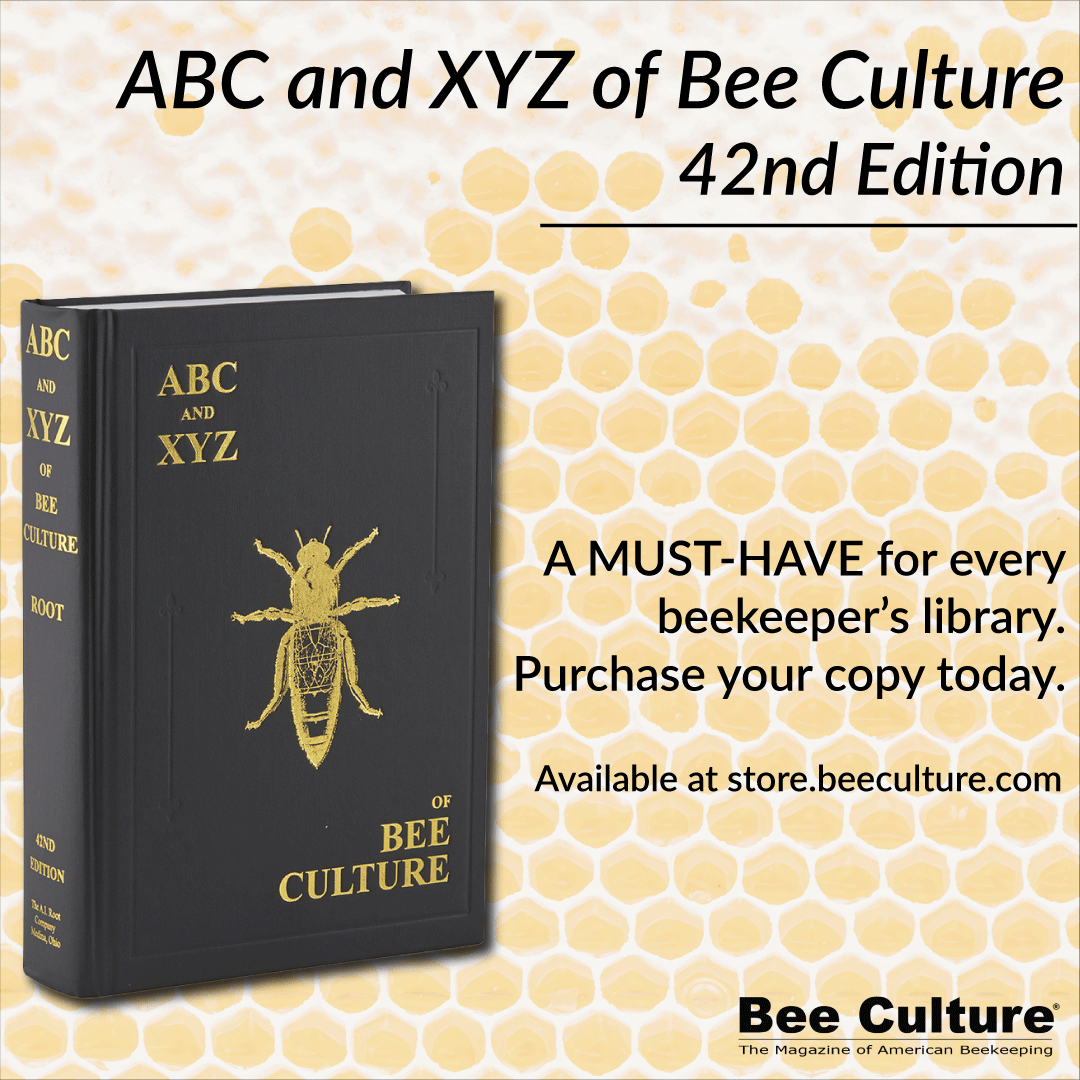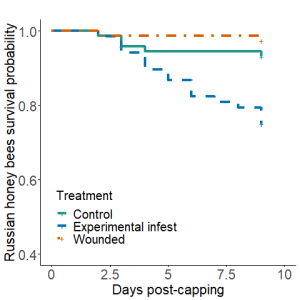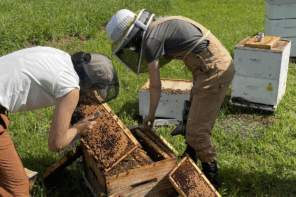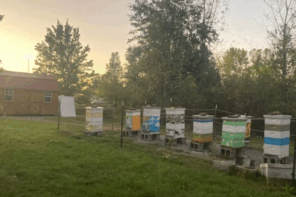By: Kate E. Ihle
In the USDA lab in Baton Rouge, our mission is to breed stronger, more resilient honey bees. We typically do that by looking for traits in worker bees that keep colony pest populations low, help them resist disease and keep them alive longer. We often tend to test disease resistance, pesticide tolerance and other physical traits in individual workers. But honey bees are social animals, and we know that what’s best for an individual bee might not be best for the colony.
Honey bees have their own individual immune systems and defenses, but they also have defenses against disease and parasites – this is called “social immunity” (Evans and Spivak, 2010). A stark example is called “self-removal” in which worker bees that are diseased or under too much stress of any kind will leave the colony early and permanently—in some cases, leaving so young that they’re not capable of strong flight. In this act of apparent self-sacrifice, they remove a potential source of broader infection from the colony. Social immunity behaviors have also been the base of successful breeding programs for Varroa resistance. Two well-known examples are the hygienic and VSH behaviors selected for in the Minnesota Hygienic and VSH Pol-line stocks. In both of these stocks, worker bees uncap and remove diseased or parasitized brood, helping to keep the colony healthy. But at the same time, hygienic behavior can expose them to whatever was afflicting the pupae that they remove.
Social immunity is a key defense against Varroa in the Eastern honey bees (Apis cerana). This Asian bee is the original host of Varroa mites, and they can thrive with active, untreated Varroa infestations by successfully keeping the mite populations low and relatively steady without human intervention. They don’t experience the seasonal peak in Varroa levels so familiar to beekeepers in the United States and Europe who use the Western honey bee (Apis mellifera) in their operations. One major reason for cerana’s steady mite levels is that Varroa almost exclusively reproduce in their drone brood. As drone production is limited in number and in the time of production, there are fewer opportunities for Varroa to produce new offspring (Fries et al., 1994). That is not to say that Varroa don’t infest A. cerana worker brood.

Varroa mites do infest worker cerana brood, but as cerana are highly hygienic, many of those infested pupae are removed by adult workers. However, this didn’t totally explain the near zero mite reproduction in worker brood cells. Recently, an international group of researchers discovered that the worker brood in Apis cerana is actively involved in the colony’s ability to tolerate Varroa infestations. The researchers introduced mites into newly capped brood cells or gave the pupae tiny wounds to mimic a Varroa feeding site, and raised them in an incubator to keep them away from their hygienic older sisters. They found that the pupae that had a mite or wound significantly slowed their development and eventually died, preventing the mites from successfully reproducing (Page et al., 2016; Lin et al., 2018). They called this phenomenon “social apoptosis” after the way that cells can initiate a self-destruct process when they’re infected to prevent the spread of that infection.
The social apoptosis trait is another very stark example of a social immunity trait. Worker pupae appear to be very delicate or susceptible to illness and injury. Counterintuitively, these fragile pupae help contribute to strong, healthy colonies by limiting the reproductive opportunities for mites and potentially the diseases that they carry. We were curious if this mite resistant trait was present in Varroa resistant lines of the Western honey bees.
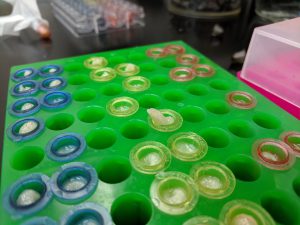 Here at the USDA Honey Bee, Breeding, Genetics and Physiology lab in Baton Rouge, we’ve bred and released two Varroa resistant stocks: the Pol-line and Russian honey bees. These stocks were bred from bees with very different histories using very different selection regimes. The Pol-line were bred from commercial stocks of Italian honey bees and were bred for a very specific trait: suppression of mite reproduction (SMR). Colonies that score high in SMR not only have low Varroa numbers, but the mites that do infest cells are less likely to have offspring. The Russian honey bees were brought from the far east of Russia, near Vladivostok in Siberia. These bees are thought to have the longest association with Varroa of any Western honey bee, as their location overlapped with that of cerana’s. They were subsequently bred by the USDA for low mite population growth over the Summer months.
Here at the USDA Honey Bee, Breeding, Genetics and Physiology lab in Baton Rouge, we’ve bred and released two Varroa resistant stocks: the Pol-line and Russian honey bees. These stocks were bred from bees with very different histories using very different selection regimes. The Pol-line were bred from commercial stocks of Italian honey bees and were bred for a very specific trait: suppression of mite reproduction (SMR). Colonies that score high in SMR not only have low Varroa numbers, but the mites that do infest cells are less likely to have offspring. The Russian honey bees were brought from the far east of Russia, near Vladivostok in Siberia. These bees are thought to have the longest association with Varroa of any Western honey bee, as their location overlapped with that of cerana’s. They were subsequently bred by the USDA for low mite population growth over the Summer months.
We tested for the social apoptosis trait in these stocks by manipulating same aged, newly capped brood from the two resistant stocks along with commercially available Italian honey bees as our non-mite resistant control. In the lab, we removed the cell caps and either introduced a Varroa foundress, gave the pupa a micro-wound or left the pupa unmolested. We covered our manipulated cells with the ends of clear pill capsules. Dr. Lilia De Guzman developed this simple, ingenious technique that allows us to watch as the brood develops and the Varroa reproduce (super fun project for kids or science fairs!). We kept these frames in an incubator to keep them away from adult workers who would clean up the mess we made and end the experiment. At the end of our experiment we were excited to see clear evidence for social apoptosis in the Russian honey bees, where our experimentally infested pupae died at significantly higher rates than the wounded or unmolested groups, but also at higher rates than the experimentally mite infested Italian bees. We also found hints of the social apoptosis trait in the Pol-line pupae, but not to the same extent as in the Russians. This research showed that brood can contribute to Western honey bee colony health, but sometimes in surprising ways.
When I first started in the lab four years ago, I came in with the idea of targeting brood resistance mechanisms to breed for more resilient bees. What I was envisioning was raising brood in the lab and trying to find the ones that were the strongest, the ones who could survive infestations and infections best to breed the Iron Man of honey bee pupae. What I found instead was that by breeding for super strong brood, I could be removing an important Varroa resistance trait. I learned in the process that sometimes the fragility or susceptibility of an individual pupae or worker might be the key to breeding healthy colonies. That is one of the most important challenges and quirks of breeding honey bees: as social animals, it’s the sum of the traits of the colony members that determines the resilience and strength of the colony. And sometimes that colony-level strength relies on the apparent weakness of its individual members.
References
Evans, J. D. and M. Spivak. 2010. Socialized medicine: Individual and communal disease barriers in honey bees. Journal of Invertebrate Pathology 103: S62-S72.
Fries, I., S. Camazine, and J. Sneyd. 1994. Population Dynamics of Varroa Jacobsoni: A Model and a Review. Bee World 75: 5-28.
Lin, Z., Y. Qin, P. Page, S. Wang, L. Li, Z. Wen, F. Hu, P. Neumann, H. Zheng, and V. Dietemann. 2018. Reproduction of parasitic mites Varroa destructor in original and new honey bee hosts. Ecol Evol 8: 2135-2145.
Page, P., Z. Lin, N. Buawangpong, H. Zheng, F. Hu, P. Neumann, P. Chantawannakul, and V. Dietemann. 2016. Social apoptosis in honey bee superorganisms. Sci Rep-UK 6: 27210.



